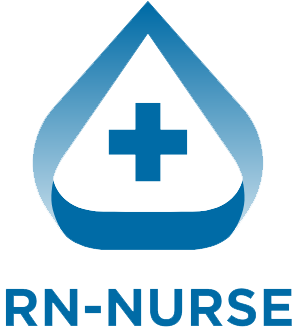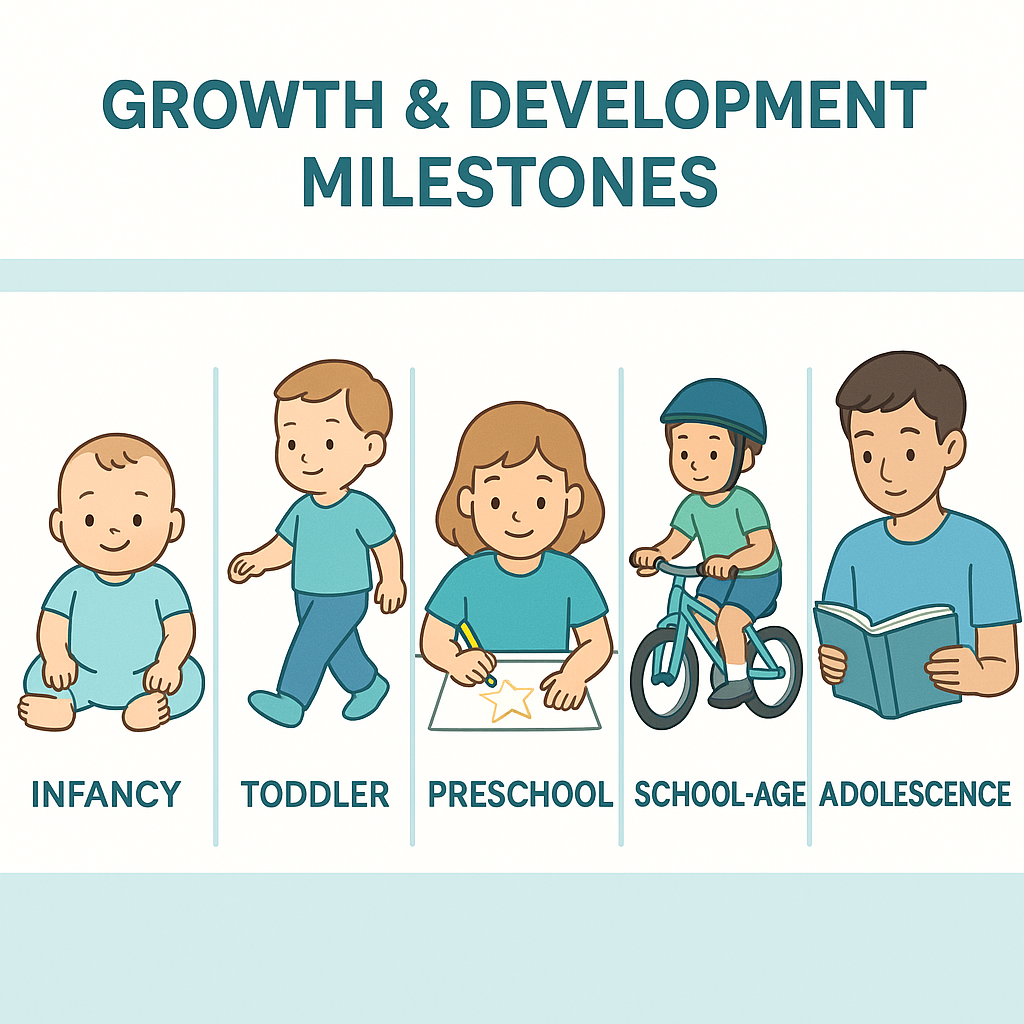Understanding growth and development milestones is one of the most important skills for any RN nurse, especially when preparing for the NCLEX or working in pediatrics. These milestones serve as a guide for nurses, parents, and healthcare providers to track whether a child’s physical, cognitive, social, and emotional development is on track.
In nursing practice, recognizing delays or abnormal findings early can make a significant difference in a child’s health outcomes. This guide breaks down the major growth and development milestones by age, with simplified notes that every nurse and registered nurse should know.
Why Growth & Development Milestones Matter in Nursing
For the NCLEX exam, questions often test a nurse’s ability to identify normal versus abnormal development. For example, knowing when an infant should roll over or when a toddler should begin walking helps a nurse decide whether to reassure parents or refer for further evaluation.
In real practice, pediatric nurses, school nurses, and family care providers use milestone charts to guide nursing assessments and health teaching. Having quick reference tools in your nursing bundle makes this knowledge easy to review.
Growth & Development Milestones by Age
🍼 Infancy (0–12 months)
- Gross Motor: Rolls over by 4–6 months, sits unsupported by 8 months, crawls by 9 months, pulls to stand and cruises by 12 months.
- Fine Motor: Grasps objects at 3 months, transfers objects between hands at 6 months, pincer grasp by 9–10 months.
- Language: Coos at 2 months, babbles by 6 months, says “mama/dada” nonspecifically at 9 months, says a few words at 12 months.
- Social: Smiles socially by 6 weeks, stranger anxiety by 6–8 months.
💡 Nursing Note for NCLEX: If a 9-month-old cannot sit unsupported, that’s a red flag for delayed development.
👶 Toddler (1–3 years)
- Gross Motor: Walks alone by 15 months, runs by 2 years, climbs stairs with both feet on one step by 2 years, jumps with both feet by 3 years.
- Fine Motor: Builds a 2-block tower at 1 year, scribbles by 18 months, copies a circle by 3 years.
- Language: 2-word phrases by 2 years, 3-word sentences by 3 years.
- Social: Parallel play, begins toilet training around 2 years.
💡 Nursing Note for NCLEX: If a 2-year-old cannot speak at least 50 words or combine two words, language delay should be suspected.
🧒 Preschool (3–6 years)
- Gross Motor: Hops on one foot, balances on one foot, skips by 5 years.
- Fine Motor: Copies shapes, draws stick figures, uses scissors.
- Language: Speaks in full sentences, knows colors, asks questions constantly.
- Social: Cooperative play, imaginary friends, understands rules.
💡 Nursing Tip: Preschoolers fear body mutilation—always use simple explanations and comfort when giving shots.
🧑 School-Age (6–12 years)
- Gross Motor: Increased coordination, rides a bike, organized sports.
- Cognitive: Learns to read, write, and apply logical thinking.
- Social: Follows rules, forms peer groups, develops self-esteem.
💡 NCLEX Alert: School-age children in the hospital may fear loss of control—give them choices when possible.
🧑🦱 Adolescence (12–18 years)
- Physical: Puberty changes, rapid growth spurts.
- Cognitive: Abstract thinking, reasoning, problem-solving.
- Social/Emotional: Peer influence strongest, identity formation, independence from parents.
💡 Nursing Note for NCLEX: Adolescents may resist authority but need privacy, respect, and trust in the nurse-patient relationship.
Quick Nursing Mnemonic – MILESTONES
- M – Motor skills
- I – Independence develops
- L – Language growth
- E – Emotional development
- S – Social interaction
- T – Toilet training
- O – Organized play
- N – New abstract thinking
- E – Education focus
- S – Self-identity
This mnemonic can be added to your nursing bundle for fast NCLEX review.
Final Thoughts for Nurses
As a registered nurse, knowing growth and development milestones is vital for both safe practice and passing the NCLEX. Delays or abnormal findings should always prompt further evaluation, while normal progression provides reassurance to families.
Having a quick reference guide in your nursing bundle will save time during clinical practice and help boost confidence for NCLEX success.

